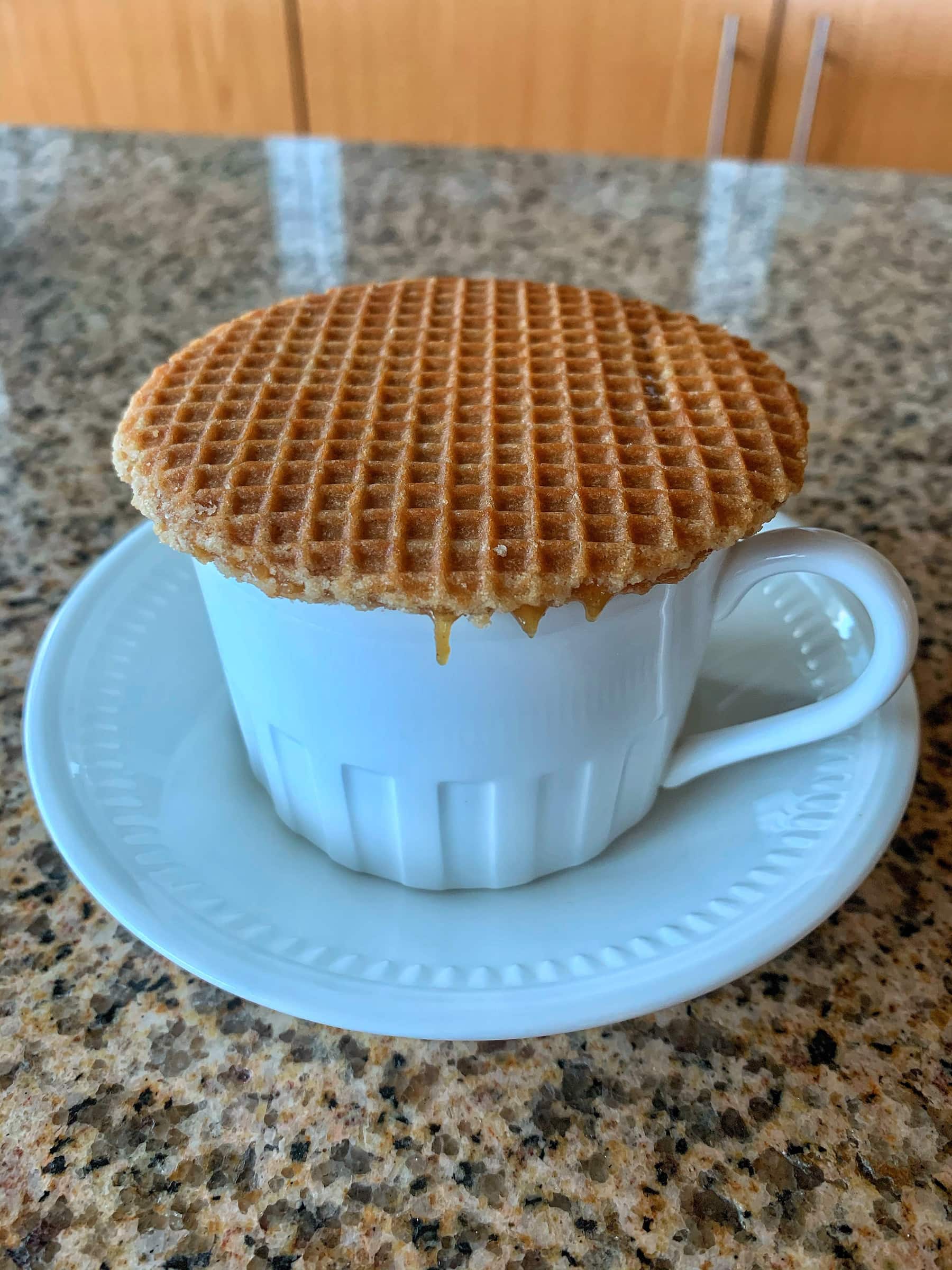
Leftovers at Its Finest.
Stroopwafel is a Dutch invention that’s globally loved today. Learn the stroopwafel history and how to best enjoy these beloved waffle cookies.
Stroopwafel History
Stroopwafels were born in the early 19th century in Gouda, The Netherlands – yes, the same town that’s known for its cheese.
Translating to “syrup waffle”, stroopwafels were created as a way to make use of leftover bakery breadcrumbs.
While the oldest known written recipe dates back to 1840, it has been told that the first baker to make a stroopwafel was Gerard Kamphuisen around 1810 when he opened his first bakery.
Essentially, stroopwafel repurposes breadcrumbs. The first batch was a failure because it was an attempt to make a single wafer on a waffle machine that fell apart and crumbled. The next successful attempts used thick syrup, like sugar beet molasses, between two thin waffle wafers to bind and hold them together.
Because the stroopwafel was made from scraps and basic syrup, it was known as the poor peoples’ biscuit. It was a cheap treat that was easily affordable for everyone, especially the lower classes.
By 1870, stroopwafel remained within Gouda with 100 bakers making the town’s specialty. Soon after, the sweet treat spread across The Netherlands to bakeries, markets, and cafes. By the 20th century, factories were producing stroopwafel. And by 1960, 17 of those factories were in Gouda. Today, 4 of them still remain.
How to Best Enjoy a Stroopwafel
While stroopwafels are delicious on its own, it is best enjoyed with a hot cup of tea, coffee, or even a hot chocolate.
The circular shape and size of the waffle cookie are designed to place on top of the cup, much like a lid.
The heat of the drink warms up the stroopwafel, softening the syrup and one side of waffle, while the other side remains crispy. Take it off the cup, and enjoy the perfect stroopwafel.
Sign up for my newsletter on the sidebar for blog updates and my travel insider tips! And, check out my vlogs on YouTube!


